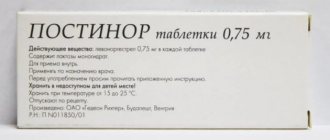Surgery to remove the uterus leads to a decrease in the level of female sex hormones. This causes hot flashes, depression, and weakness. Long-term consequences are more dangerous - obesity, diabetes, atherosclerosis, osteoporosis. Read more about what tests for hormones after removal of the uterus and medications with them are needed, as well as other operations on the organ, in this article.
Hormonal levels after hysterectomy
The main factor in the disruption of hormone levels after surgery is a change in blood circulation in the ovaries. They are deprived of blood flow through the uterine arteries. This provokes nutritional deficiency (ischemia), stagnation of blood and lymphatic fluid. Because of this, their tissues are destroyed and their functions change:
- lack of ability to ovulate;
- the production of hormones decreases: estradiol, progesterone, testosterone;
- weakens interaction with the pituitary gland, which regulates hormonal levels
During the childbearing period, the functioning of the ovaries can gradually recover over time. In women after 40 years of age, and sometimes in younger women, early menopause occurs. Manifestations of postoperative syndrome are caused by estrogen deficiency.
Typical signs include:
- constant weakness, lethargy, low performance;
- sweating, hot flashes;
- depression;
- arterial hypertension, pressure changes;
- absent-mindedness, memory impairment;
- increased anxiety, irritability, tearfulness;
- rapid heartbeat, stabbing pain in the heart;
- poor tolerance to changes in external temperature and atmospheric pressure;
- insomnia;
- vaginal dryness, pain during sexual intercourse;
- increased body weight;
- urinary incontinence when laughing, coughing, tensing the abdominal muscles;
- frequent urination;
- prolapse of the vaginal walls;
- skin aging;
- hair loss;
- decreased sexual desire.
An important role is played by a change in a woman’s perception of her biological role, the formation of a feeling of inferiority, which negatively affects her overall well-being.
We recommend reading the article about vitamins for a woman’s hormonal levels. From it you will learn about the reasons for normalizing hormonal levels in women, vitamins for recovery, what cyclic vitamin therapy is and a diet for normalizing hormonal levels. And here is more information about the hormone gonadotropin.
Possible consequences
Hormone replacement therapy often causes complications. The most typical negative consequences that arise from such treatment include the following:
- uncontrolled and active weight gain;
- increased body hair growth;
- change in voice timbre;
- development of concomitant diseases of the heart and other organs.
The likelihood of developing complications depends both on the individual characteristics of the body and on compliance with the prescribed dosage of drugs. In addition, menopausal symptoms usually return after stopping medications.
Long-term consequences of the operation
The symptoms of disorders in the body are not limited to current changes; the consequences of a long-term deficiency of sex hormones are much more dangerous. It has been established that the lack of the required amount of estrogens, progesterone and androgens (male steroids) is a risk factor for:
- osteoporosis – destruction of bone tissue;
- progression of atherosclerosis and related diseases - angina, heart attack, stroke;
- increased formation of blood clots in venous and arterial vessels due to high blood viscosity;
- fat deposits in the abdominal area;
- diabetes mellitus type 2.
Progression of atherosclerosis
Recent studies have established that the uterus has its own hormonal activity. It can produce compounds from the group of prostaglandins. These substances have a protective effect on arterial walls, preventing hypertension and cholesterol deposits. This explains the occurrence of diseases of the cardiovascular system after surgery, even with preserved ovaries.
If the postoperative period is favorable, the structure and function of the ovarian tissue improves after six months. Follicles appear in it after the bypass blood flow is formed. This causes the resumption of ovulation and the cyclical production of hormones. A period of temporary improvement in health begins.
After a year, and especially after 5 or more years, the condition worsens, estrogen deficiency progresses. This is explained by the fact that the uterus contains the bulk of hormone receptors (receptive proteins). After their disappearance, it becomes impractical for the body to produce hormonal compounds.
Types of operations leading to surgical menopause
Sometimes surgery followed by elimination of reproductive organs is the only solution to some diseases. Such pathologies can develop at any physiological age of a woman, but the greatest risk of their occurrence falls on the mature age contingent of the female population. Surgical menopause in women occurs with any surgical resolution of a serious pathological process.
In accordance with the individual indications of each woman, surgical menopause occurs:
- when only the ovaries are removed, while the uterus remains in place, this process is called oophorectomy;
- when the uterus itself is removed, but the ovaries or one of them are preserved, which is called a hysterectomy;
- If the ovaries and uterus are removed, menopause occurs instantly. In medical parlance, this is called a hysterectomy combined with an oophorectomy.
The last option for surgical resolution of diseases is used in medical practice most often, not taking into account the fact that basically all pathological processes are localized mainly in the uterus itself, but removal of the uterus and ovaries after menopause is a more correct solution in some situations.
The use of hysterectomy in combination with oophorectomy by specialists is due to the fact that removal of the ovaries prevents the risk of developing cancer, the likelihood of which increases in accordance with increasing physiological age.
Are ovaries necessary during menopause?
Many doctors give priority to preserving the female glands during surgery, since after the operation they still continue to maintain hormonal levels, which significantly mitigates the symptoms of menopause after removal of the uterus.
Therefore, the ovaries, even during menopause, are an integral part of the reproductive system of organs that ensure the normal well-being of a woman. If during the operation after which menopause begins, the uterus and ovaries are removed, then the accompanying symptoms may be more acute.
What tests to take
To assess the severity of clinical manifestations of surgical menopause, laboratory diagnostics of the following indicators (in venous blood):
- estradiol, ovarian progesterone;
- follicle-stimulating and luteinizing hormone of the pituitary gland and their ratio;
- Adrenal dihydroepianstenolone.
A low estrogen background and an increase in pituitary activity according to the feedback principle are detected (the less estradiol, the higher follitropin and lutropin).
A study of adrenal function is necessary to prescribe a combination of female and male sex hormones (replacement therapy).
Removal of the uterus with appendages - why does this happen?
In fact, there are several different reasons why a woman may have her uterus completely removed. Speaking about the most common cases, the following factors should be noted:
1 Peritonitis;
2 Pregnancy occurring in the cervix;
3 Presence of purulent diseases;
4 Complex forms of diseases (fibroids, cancer).
It is also very important to monitor the general condition of the female body after the operation. If the slightest deviation occurs, it is recommended to immediately notify your doctor. There is always a high probability of various complications, even death.
Do I need to take hormones after removal?
The need to use hormonal drugs is determined by the gynecologist after examination, ultrasound and blood tests. For different types of surgery, treatment approaches differ.
Uterus and ovaries
If the manifestations of estrogen deficiency are mild (more often with preserved ovaries) or moderate, and the woman’s general well-being is slightly changed, then it is recommended:
- sedatives (Persen, Novo-Passit);
- antidepressants (Cipramil, Venlafaxine);
- homeopathic medicines (Klimakt-hel, Klimaktoplan);
- plant phytoestrogens (Estrovel, Klimadinon);
- physiotherapy (endonasal electrophoresis of vitamin B1, galvanic collar).
Severe and persistent disorders require the use of hormones:
- estrogens and androgens – Gynodian depot, Amboix;
- Estraderm estrogen patch, Estrogel skin gel, Livial tablets;
- a combination of progesterone and estrogens - Cycloproginova, Klimen, Divina, Trisequence.
When using these drugs, it is necessary to monitor blood clotting (coagulogram), take a course of antiplatelet agents (Curantil, Plavix), venotonics (Detralex, Phlebodia), examination and ultrasound of the mammary glands.
The duration of taking hormones can be from 3-6 months in young and middle-aged patients to 5 years in the premenopausal period or until the onset of physiological menopause.
Contraindications for use include:
- severe liver and kidney diseases;
- blockage of blood vessels by blood clots in the past (thromboembolic complications);
- tumors of the mammary glands, kidneys, skin or a hereditary predisposition to them.
Polyp in the uterus
If only the polyp has been removed, but the uterus has been preserved, then medications that normalize hormonal levels are indicated. Most often used:
- ethinyl estradiol and dienogest - Bonade, Siluet;
- ethinyl estradiol and desogestrel - Marvelon, Mercilon;
- progesterone – Utrogestan, Progestogel;
- norethisterone – Norkolut, Primolut-nor;
- dydrogesterone - Duphaston;
- IUD with progesterone analogues - Mirena.
If there is a risk of polyp degeneration, and the patient’s age is close to menopause, then only the uterus or in combination with the ovaries is removed.
The prescription of replacement therapy with estrogen drugs is determined by the state of the hormonal levels and the results of histology (tissue analysis) of the removed uterine layer.
Myomas
Due to the unfavorable consequences of complete removal of the uterus in the presence of fibroids, it is preferable to perform a gentle operation aimed at removing the tumor. In order to reduce the size of the tumor and surgical blood loss, drugs are administered.
They first stimulate and then deplete the reserves of gonadotropic (affect sex) hormones of the pituitary gland - Zoladex, Buserelin, Goserelin. These medications reduce the volume of the node by half, reduce the height of the endometrium (inner layer) and stop uterine bleeding. Against the background of their use, the woman enters a state of artificial menopause.
A similar effect of reducing fibroids, but without signs of menopause, can be achieved using a progesterone effect blocker - Ginestril or Esmiya. They are taken continuously for 3 months, and then the issue of removing the myomatous node is considered. These drugs can also be used after surgery to prevent tumor recurrence.
The main or additional remedy may be the installation of the Mirena spiral with a preserved uterus. It has the ability to secrete a progesterone analogue, which has a local effect on fibroids. Such an intrauterine system inhibits tumor growth and endometrial proliferation, alleviates the course of endometriosis and can be chosen as an alternative to surgery.
We recommend reading the article about hormonal imbalance. From it you will learn about what hormonal levels are, possible causes of hormonal imbalance, diagnosis, how to restore and normalize hormonal levels in women, treatment in men. And here is more information about the hormonal background in women.
Hormones after removal of the uterus first decrease due to poor circulation in the ovaries, and then due to the lack of uterine receptors. Manifestations of estrogen deficiency are especially often noted. They can occur immediately after surgery, but the most dangerous are long-term consequences. Therefore, in the absence of contraindications, hormone replacement therapy is prescribed.
The choice of drugs depends on the test results and the disease for which surgical treatment was performed.
The essence of hormone replacement therapy
This type of therapy is used for the removal (partial or complete) of organs responsible for the production of hormones. If the uterine cavity and appendages are excised, menopause occurs, which is characterized by the following symptoms:
- increased irritability;
- sleep disturbance;
- decreased performance;
- depression;
- causeless fatigue.
The patient’s treatment regimen is developed individually and takes into account the following circumstances:
- woman's age;
- the presence of concomitant pathologies (absolute contraindications are heart and liver pain, cancer);
- the presence of a genetic predisposition to certain diseases;
- volume of surgical intervention.
Hormone replacement therapy is not prescribed to patients who have a persistent and long-term dependence on nicotine and/or alcohol.
In cases where only the uterus is removed, but the ovaries are preserved, medications are prescribed in minimal dosages. But after excision of the appendages, combination therapy is mainly used, which involves the constant use of medications that are analogues of estrogen and progesterone.
It is recommended to start taking these medications 2-3 months after removal of the uterus and appendages. The need for the use of these drugs is indicated by changes in the psycho-emotional state of the patient caused by hormonal imbalance.
This type of therapy often causes complications. Taking hormones (synthetic progesterone and estrogen) for several years can provoke:
- mammary cancer;
- pathologies of the cardiovascular system;
- Alzheimer's disease;
- decreased bone strength (osteoporosis);
Due to the high risk of complications, hormone replacement therapy is regularly adjusted. If necessary, the patient is recommended to reduce the dosage of drugs or stop taking them 5-7 times after the start of treatment.
Useful video
Watch the video about hysterectomy and possible consequences:
Similar articles
- Vitamins for a woman’s hormonal levels: which ones...
A doctor can best select vitamins for a woman’s hormonal levels based on medical history and tests. There are both specially designed complexes for recovery, and those selected individually to normalize the hormonal levels of women. Read more - Drugs for the adrenal glands: which ones are used for...
Both in case of impaired production and in order to suppress excessive production, drugs for the adrenal glands are prescribed. They are also used to treat obesity in women. There are medications to normalize the functioning of the adrenal glands, as well as stop the progression of pheochromocytoma. Read more
- Hormonal imbalance: how to restore...
Due to external and internal factors, hormonal imbalance may occur, both in women and men. The body can only be checked by a detailed examination, and symptoms can be used to suspect it. Treatment includes the use of hormone replacement therapy and lifestyle changes. Read more
- Hormonal levels in women: normal, disturbances and failures...
In many ways, the reproductive system is influenced by hormonal levels in women. The norm is regular menstruation, pregnancy, and good health. If failures occur after 40 years, it may be menopause or menopause. There are also psychological reasons that lead to disorders and low hormonal levels. Read more
- Gonadotropin hormone: chorionic, releasing...
The gonadotropin hormone plays a fairly significant role in the body. It can be chorionic, risiling, releasing. The mechanism of action allows you to conceive or stop menstruation, introducing artificial menopause, and increase sperm production. Read more
Types of drugs
The type of drugs is also selected depending on the individual characteristics of the patient’s body and the scope of surgical intervention. Often, after the removal of one ovary, it is recommended to take only small amounts of synthetic estrogen.
Hormone replacement therapy uses medications available in the form of tablets, suppositories, injection solutions and ointments (gels).
Pills
To get rid of the symptoms of early menopause, the following drugs are indicated:
- "Klimonorm";
- "Femoston";
- "Clymene".
"Klimonorm" is used when there is a need to restore the levels of progesterone and estrogen. This drug, produced in the form of tablets with a yellow or brown shell, is not recommended for oncological processes. Treatment with Klimonorm is carried out for three weeks, after which it is necessary to take a break for 7 days. The daily dose of the drug is 1 tablet.
"Femoston" is based on the substance 17-beta-estradiol. It is recommended to take the drug for 28 days, after which you need to take a month's break. The medicine not only relieves the symptoms of early menopause, but also prevents the development of osteoporosis.
Thanks to the estradiol valerate “Klimen” contained in the substance, it prevents changes in the female body according to the male type (active hair growth in various parts of the body, deepening of the voice, etc.). The drug should be taken every day, one tablet for three weeks, after which you need to take a break. The total duration of treatment with Klimen is at least two years.
Taking hormonal drugs in the form of tablets is indicated for women with skin problems, as well as for patients who are at risk of developing bowel cancer.
Solutions
Injections are rarely used as part of hormone replacement therapy. This type of treatment is carried out using the drug “Gynodin Depot”, which is based on an estrogen-progestogen substance. Injections are recommended to be done daily. If problems with metabolism are detected, a week break between procedures is indicated.
Hormone replacement therapy, carried out by injection, more often produces side effects in the form of skin itching, redness and other severe symptoms.
Candles
Hormonal suppositories help prevent the following complications that arise after removal of the uterus and appendages:
- atrophy of vaginal tissue;
- discomfort in the pelvic area;
- changes in acidity and disruption of vaginal microflora.
Each of the above factors contributes to the addition of a secondary infection and the activation of bacteria that are constantly present on the vaginal mucosa.
As part of hormone replacement therapy, two drugs are usually used, produced in the form of suppositories: Colpotrophin and Estriol-M. The first product contains the substance promestriene, which stimulates the restoration of damaged vaginal tissue. It is recommended to use the drug for at least 20 days in a row. Colpotrophin rarely causes complications.
"Estriol-M" helps restore hormone levels in the blood. At the same time, the drug prevents drying of the vaginal mucosa. In the first 4 weeks after removal of the uterus, it is recommended to administer 1 suppository “Estriol-M” daily. In the future, the treatment regimen is adjusted by the doctor.
Hormonal preparations in the form of vaginal suppositories are recommended for patients with diabetes mellitus, bowel and bladder pathologies.
Local preparations
If there are appropriate contraindications (pathologies of the digestive tract, etc.), hormone replacement therapy is carried out using topical drugs. As part of this approach, Orniona cream is used, which contains estriol. The drug is administered directly into the vagina using a special dispenser. In the first few weeks, the product must be used daily.
In addition to Ornion, hormone deficiency can be eliminated with the help of Estrogel. This gel should be applied daily to the stomach.
Non-hormonal homeopathic medicines for menopause
Often prescribed non-hormonal homeopathic remedies are Qi-Klim and Remens. Qi-Klim is a natural preparation. The active ingredient is black cohosh extract, a phytoestrogens. Provides all minerals and necessary substances.
Minimizes:
- sweating;
- tides;
- irritation;
- sleep disturbance;
- dry mucous membranes and skin.
In tablet form, take 1 capsule and wash it down with water. Take twice a day at the same time. In liquid form, take 30 drops 2 times a day. The course of therapy should last no more than 3 months.
This is interesting: Pityriasis rosea in humans. Symptoms, treatment, causes in children and adults. Folk remedies, drugs, ointments
Remens consists of soybean phytohormones, stimulates and produces its own hormones. Helps minimize irritability, sleep disturbances, increased sweating, and hot flashes. The drug should be taken 10 drops 3 times a day. Therapy is prescribed for a period of no less than 90 days.
Hormone replacement therapy after removal of appendages: pros and cons
After removal of appendages, almost all women are afraid that hormone replacement therapy may harm them. It should be noted that this happens very rarely, because the doses of drugs are selected to compensate for the loss of one’s own hormones. The disadvantage of this treatment is the development of adverse reactions caused by incorrect dosage selection or individual sensitivity to drugs.
These include:
- uterine bleeding;
- engorgement of the mammary glands;
- hirsutism;
- increased skin oiliness;
- hyperemia and irritation of the dermis.
But still, after removal of the appendages, hormone replacement correction has positive effects:
- the condition of the skin and mucous membranes improves;
- heart function and vascular tone are normalized;
- the functions of the thyroid gland are restored;
- the risk of bone fragility is reduced;
- well-being improves.
Post-variectomy syndrome: hormone replacement correction after removal of appendages
Hormone replacement therapy begins immediately after removal of the appendages, regardless of whether symptoms characteristic of ovarian hypofunction appear or not. Post-castration syndrome is a set of clinical manifestations that develop as a result of the shutdown of ovarian functions. It occurs in women 3 weeks after surgery. In some cases, its manifestations are possible already on the third day of the postoperative period. The peak development of symptoms is observed 2–3 months after resection of ovarian tissue.
Hormone replacement tactics after removal of appendages are not chosen if there are contraindications:
- breast cancer;
- malignant degeneration of the endometrium;
- acute venous thrombosis;
- decompensation of kidney or liver function;
- unspecified bleeding from the genital tract.
Hormone replacement therapy after removal of appendages involves the prescription of estrogen, gestagen drugs or their combinations. The choice of medications in each specific case depends on the severity of the pathological process, the age of the patient and the extent of the surgical intervention performed. Timely correction of hormonal disorders improves the prognosis and reduces the risk of adverse consequences.
Dear doctors! I am 39 years old. Six years ago I had surgery - supravaginal amputation of the uterus without appendages, due to severe postpartum bleeding. I still have fairly regular spotting “menstrual” discharge, but for obvious reasons I cannot evaluate its quality.
In this regard, I have a question: does such an operation affect hormonal levels?
I understand that formally it has no effect, since the ovaries are preserved. But I ask you to share your clinical observations: is there a “feedback”, that is, does the absence of full menstruation lead to a gradual decline in ovarian function and premature menopause? This is not an idle question: over the last year I have developed vegetative disorders, heart pain, increased nervous excitability, etc., is this related to the topic of my question?
And hence another question about HRT. Doctors say different things. One answer: You should have been prescribed HRT immediately after the operation (without explanation). Another: the ovaries are functioning, which means nothing is needed. Third: if you want, take some contraceptives like Marvelon, Triregol, etc.
To be honest, I'm completely confused. It seems to me that these are still different things. And if HRT is needed, then, firstly, what drugs are best to use in my situation and, secondly, won’t this lead to a complete cessation of the production of one’s own hormones?
I would be very grateful for any advice. (I especially hope for the help of G. A. Melnichenko - please, please. :))
Hello, dear Galina Afanasyevna, I am very grateful for the clarifications. Let me ask you a few more questions.
1. On what day of the cycle is it better to take these tests so that the result is reliable? 2. At what decrease, if it is detected, should one agree to HRT, since the patient still has to make the decision? 3. Natural estrogens - what kind of drugs are they, and what are their advantages over artificial ones? Do you need to take them for the rest of your life or in some courses? 4. What is included in the list of contraindications? Mastopathy is probably included? 5. Will HRT lead to a complete cessation of the production of one’s own hormones?
And finally, if I may, one more question from another discussion in which you took part:
6. Could the disorders that we are discussing be the cause of undulating low-grade fever and general deterioration of well-being (PMS.), which begin on the 10-12th day of the cycle and end with the beginning of the next menstruation? Everything else that is possible has already been checked. And if so, how to deal with it?
Sorry for so many “uninteresting” questions. You had the opportunity to evaluate the level of advice from our doctors (far from the worst in the city). I'm not even talking about the antenatal clinic, where they even treat this with some contempt (“we have no time for trifles, they say”) and, apparently, they believe that all my problems concerning them have already been solved. Thanks again.
Dear Galina Afanasyevna! Circumstances developed in such a way that I was only able to conduct a serious hormonal examination now. The results are as follows:
_______________5th day of the cycle______22nd day of the cycle LH_____________5.26 (3-12)________________5.57 (2-16) FSH____________6.4 (2-12)________________7.9 (2-5) Prolactin______270.9 (79.2-592.7)________314 .4 (same standards) Progesterone____0.08 (0.06-1.26)__________not determined Estradiol______207.2 (30-200)___________46.5 (50-250) Testosterone____0.16 (0.07-0.65)__________0.34 (same standards) Cortisol_______603 .7 (190-750)___________610.3 (same standards)
Could you comment on these results in light of the questions I asked? Is there a decrease in ovarian function? Should I think about HRT or is it too early? If not, how often does it make sense to repeat the examination?
Dear Galina Afanasyevna, thank you for your patience and desire to help. You need a doctor - neither examination according to the “low-grade fever of unknown origin” algorithm, nor according to the “HRT in perimenopause” algorithm is carried out in absentia. If I were in your place, the first thing I would do is make sure that there is nothing serious behind my low-grade fever. The topic “low-grade fever of unknown origin,” according to my observations, is very disliked by doctors. I tried to figure it out for about five years. At first I felt generally not bad, but when I accidentally measured my temperature I suddenly discovered that it was elevated. I didn't pay much attention. I tried to consult with doctors, but was met with a complete lack of enthusiasm and left this question until next time. Gradually, my health deteriorated so much that I went to the hospital for examination, followed by another, and so on 4 hospitals in a row. They looked for all kinds of infections, chroniosepsis, etc. Nothing like that was found, with the exception of positive titers for borreliosis. Since ticks had never bitten me, I was told: “What could borreliosis be without a tick?” and they sent me on my way. By that time, I had already begun to measure my temperature regularly and noticed that it changed strictly cyclically. Time passed, my titers grew, and in the end I was diagnosed with “chronic borreliosis with damage to the central nervous system.” Things have already reached the point of hemiparesis and other unpleasant things.
Now I have been treated, all these symptoms have gone away, tests also seem to show recovery (not yet for sure, but with a high probability), but the cyclic low-grade fever and cyclical deterioration in health persist. Infectious disease specialists say that this is not typical for borreliosis and send me to endocrinologists. They also say that this could be the consequences of a neuroinfection - hypothalamic syndrome, although it is not clear why it is cyclical. I tried to think about this topic, asked questions (in the section “Mc disorders + basal temperature”), no one answered me. In the end, everything came down to the gynecologist-endocrinologist.
Today I had a consultation with her. After listening to my complaints, she immediately said that it was PMS and I needed OK, and suggested it to Diana. To my timid questions regarding hormonal levels, contraindications, etc. said: “If you don’t want it, OK, let’s prescribe HRT.” When I asked to explain how they differ and how they affect the production of my own hormones, she replied that OCs suppress it and give the ovaries a rest, while HRT, on the contrary, stimulates it. Is this really true? Moreover, he offers HRT estrogens + gestagens (climodien, which is also recommended no earlier than a year after the cessation of menstruation), and not only estrogens, as you advised me. And after that, after looking at my tests, she said that everything was fine with me and I didn’t need anything. “So decide for yourself, choose.” I’m completely confused, I’m not in the market to choose. Galina Afanasyevna, you wrote that there is some kind of “HRT in perimenopause” algorithm, where can I read about it and who else can I consult with? We have no other doctors. Sorry for the long messages and thanks again for your advice.
Today, the level of development of medicine has reached such heights that almost every person, having certain health problems, can count on effective medical care. When representatives of the fair sex have their female genital organs removed (most often the uterus and ovaries), a real revolution occurs in their heads and in their bodies. The main part of the questions relates to the field of hormone replacement therapy, especially since in your case enough time has passed to understand how much your body needs additional drug support.
Hormone therapy: pros and cons
HRT is a treatment that is aimed at replenishing missing hormones in the body in women. When their balance is restored, the symptoms of menopause immediately decrease.
Advantages of HRT:
- gives smoothness to the skin;
- makes sleep more peaceful;
- increases hair volume;
- relieves hot flashes;
- reduces the risk of heart attack and cardiovascular diseases;
- reduces the risk of Alzheimer's disease;
- reduces the risk of bone atrophy;
- strengthens the skeletal system;
- slows down the aging process;
- reduces the likelihood of breast cancer, uterine cancer, and endometrial pathologies;
- increases a full intimate life, normalizes the elasticity of mucous membranes, secretes secretions in normal quantities.
The disadvantage of therapy is that during HRT:
- the risk of developing breast cancer increases;
- thrombosis develop;
- apoplexy appears;
- myocardial infarction occur.
Monohormonal drugs with estrogen for women
Monohormonal preparations with tarragon include:
- Microfollin. Suppresses menopausal symptoms and stops the risk of osteoporosis. The course of therapy is 3-6 months, 0.05 mg of the drug per day during menopause.
- Divigel. Replenishes the lack of estradiol in the body and helps against menopausal symptoms. The gel is prescribed once a day for 12 days in each cycle.
Processes in the body after removal of appendages: why is hormone replacement correction needed?
After bilateral removal of the appendages, characteristic changes occur, and hormone replacement correction becomes necessary. Physiological processes in the neuroendocrine system are disrupted, causing maladaptation. It is perceived by the body as stress, as a result of which the production of glucocorticosteroids by the adrenal cortex (cortisone, cortisol and androgens) and the brain (adrenaline and norepinephrine) is activated. A deficiency of estrogen hormones leads to changes in internal organs and disruption of the functioning of many systems.
After total removal of the appendages, visceral changes occur, for which hormone replacement therapy is mandatory. These include:
- thinning and decreased elasticity of the skin;
- dryness and atrophy of the vaginal mucosa;
- reduction of the uterus and closure of the cervical canal;
- replacement of glandular tissue of the mammary glands with adipose tissue;
- brittleness of hair and nails;
- joint and muscle pain;
- urinary disorders (frequent urge, urinary incontinence);
- recurrent cystitis and urethritis;
- osteoporosis.
In addition to hormone replacement correction after removal of appendages, syndromic treatment is carried out for the following somatic and psycho-emotional dysfunctions:
- hot flashes and excessive sweating;
- headache and dizziness;
- feeling of heartbeat;
- general weakness and malaise;
- fatigue;
- irritability and tearfulness;
- sleep disturbance;
- decreased or lack of appetite;
- loss of libido.
If a woman had instability of the pituitary-hypothalamic system before surgery, then post-castration syndrome, accompanied by mental and emotional disorders, will certainly develop. Therefore, both symptomatic therapy and hormone replacement therapy after removal of appendages should be carried out together.
Hormonal injections and patches
For intramuscular administration, Gynodian Depot is most often used. Injections are given every 28 days, but in exceptional cases, the duration of therapy can be extended to 1.5 months (based on the metabolic rate in the patient’s body).
The use of vaginal creams or suppositories after removal of the uterus and ovaries helps prevent atrophy of the epithelium of the vagina and reproductive organ. These products are intended to maintain normal vaginal microflora, therefore they are often used in the postoperative period.
Ornion cream contains estriol. The box contains a dispenser and applicator, which makes it easier to administer the drug. Daily use is usually only required for the first few weeks of therapy, after which the schedule changes. The treatment regimen is discussed with a specialist.
Estrogel gel contains estradiol derivatives and has an anti-climax effect. The use of this dosage form allows you to cope with the symptoms of menopause without harm to the liver and kidneys. The medication is dispensed using an applicator or pump dispenser. The area to which the product is distributed is usually the abdomen. The duration and frequency of treatment are determined by the doctor.
To restore hormonal levels after a hysterectomy, a patch with estradiol Klimara is used. The active substance penetrates the body through the skin within a week from the moment of sticking. After the specified period, the product is replaced with a new one. This method of therapy is very convenient, as there is no need to take pills every day. The patch adheres tightly to the skin and can only come off under the influence of too hot water or if it is not fixed correctly.
Hormone replacement therapy after removal of the uterus and/or ovaries is almost always necessary. Failure to follow the doctor’s recommendations is fraught with the development of artificial menopause with all the accompanying symptoms that darken a woman’s life. To normalize the state of the reproductive system, it is also necessary to lead a healthy lifestyle and eat right.
A hysterectomy is the surgical removal of the uterus. If this procedure is accompanied by removal of the ovaries, this may cause menopause. Hormone replacement therapy is often recommended for women who have undergone surgical menopause. This article provides information about the health risks and benefits associated with hormone replacement therapy after a hysterectomy.
Until recently, hormone replacement therapy was often recommended for menopausal women because it was believed that the use of synthetic hormones could reduce the risk of heart disease, brittle bones and dementia. However, extensive research conducted by IBK has debunked some of these health benefits, and has identified certain health risks associated with HRT. In general, hormone replacement therapy is recommended when women begin to experience distressing symptoms associated with menopause. Perimenopause or premenopause is a transitional period before menopause, with no irregularities in the menstrual cycle. Hormonal therapy is also necessary in the case of surgically induced menopause, observed in women who undergo a complete hysterectomy (removal of the uterus and cervix) with bilateral salpingo-oophorectomy (removal of the fallopian tubes and ovaries). Since the ovaries produce estrogen and progesterone, HRT is recommended to maintain hormone balance after this surgical procedure.
The need for HRT after Hysterectomy
Surgical removal of the uterus and adnexa is recommended in the case of menopause in women who are in great discomfort due to abnormal vaginal bleeding, hot flashes, vaginal dryness, or other disturbing symptoms associated with menopause. At times, the decision to remove the uterus and/or ovaries may be due to other existing medical conditions, such as uterine fibroids, endometriosis, uterine prolapse, or cancer of the uterus, ovaries, or cervix. Since the ovaries are primarily responsible for the production of estrogen and progesterone, the decision to remove the ovaries is made only if the benefits outweigh the risks. In fact, women who experience mild symptoms during menopause are encouraged not to take hormone therapy. However, women who have a uterus and ovaries need to take synthetic hormones. Synthetic hormones can be taken in pill, patch, aerosol, or gel form. Surgical menopause does not occur in women who undergo hysterectomy alone because the ovaries continue to produce the female sex hormone estrogen. However, in some cases, menopause may occur earlier than usual.
HRT after Hysterectomy
The goal of hormone therapy is to correct hormonal imbalances in a woman's body after a hysterectomy. While estrogen replacement therapy is recommended for women who have had a hysterectomy, combination hormone therapy (estrogen and progestin) is recommended for women who still have a uterus. This is because estrogen therapy alone puts women at increased risk of developing uterine cancer. Combination hormone therapy may be recommended for women suffering from endometriosis or those who have had a partial hysterectomy.
There are certain aspects that doctors should consider before recommending hormone therapy. These include:
- Age at hysterectomy
- disease history
- family stories
- health problems that may interfere with HRT
Here are some guidelines that doctors should follow regarding hormone replacement therapy.
- It is better to start hormone replacement therapy for women who have recently entered menopause.
- The administration of synthetic hormones should be avoided in women who have entered menopause several years ago.
- HRT (either CHT or others) is not suitable for women with a high risk of stroke, heart disease, liver disease, blood clots, or breast cancer.
Long-term use of synthetic hormones may put you at risk of developing certain health problems. Health risks may be associated with the length of time that synthetic hormones are taken.
- Combination hormonal therapy (estrogen and progestin) should not be prescribed for more than 3 to 5 years due to the risk of breast cancer.
- Although studies show that estrogen replacement therapy is safe for 7 years, it is always best to take these hormones at the lowest possible dose for the shortest period of time.
Bioidentical hormones
Until recently, HRT was seen as an ideal treatment option for women suffering from post-menopausal symptoms such as hot flashes, mood swings, decreased sex drive, muscle and joint pain, etc. Although HRT reduces the risk of osteoporosis and colon cancer in In postmenopausal women, long-term use of synthetic hormones has been associated with an increased risk of certain diseases. This is the reason for the need to look for a safe alternative. Some pharmaceutical companies produce bioidentical hormones, which are believed to be chemically identical to the hormones our bodies produce. Some clinics also create custom formulations that are based on an individual's hormone levels, which in turn are determined through a saliva test. It should be noted that these formulations are not regulated by the Department of Health, as there is no evidence that bioidentical hormones are safer or more effective than other hormonal products.
In conclusion, every woman experiences menopause (natural or surgically induced) in a unique manner. Therefore, the duration, duration, and dosage of hormone therapy will vary depending on the risks and benefits in individual cases. Your doctor should independently evaluate and decide if you need to take synthetic hormones. Hormone therapy can certainly improve the quality of life of women who experience severe menopausal symptoms, but therapy should only be continued if the benefits outweigh the risks. Overall, HRT is an excellent treatment option, but should be discontinued completely if necessary. You should make an informed decision based on your specific health and qualified medical advice.
I found very valuable information in your topic about a grandmother who lived without ovaries for more than 35 years. This is the main thing to calm down. Take care of such people. “Absorb” information about lifestyle and nutrition from her. I now ask all my work colleagues if they know such people. I found three women. I ask you to meet them and see what they look like. Talking to them face to face is very important. ONE woman has lived for more than 25 years (she is already 67), the second moved far from Moscow, but also underwent surgery at the age of 40 and is now over 55 years old. So far I haven’t met anyone personally. But now I will analyze the facts. This is very useful information for all women. If I see you and talk, I can compare something and make other “beginners” happy. By the way, in Europe there are communities in which women share their life experiences precisely in the situation of living without a certain organ. Let's hope that this will happen for us too. But life without ovaries is possible and can be very long (more than 35 years) if certain rules are followed. Girls, if the diagnosis of oncology has not been confirmed, what are you “worried” about? My mother, after the removal of her organs, has been living happily for 32 years and does not adhere to any special rules. At 78 she looks at most 70. Lead an active lifestyle, watch your diet, take care of yourself and be happy. And most importantly, do not inflate problems out of the blue.
Hello! Let him prescribe treatment, don’t immediately agree to cut them out rather than bother. I was 23 years old when my uterus was removed, okay God gave me one child
Operation 3 was performed in February and it was removed. They prescribed climate pills for the uterus and they say there will be hot flashes, what are they?
Hello! In 2008, everything was removed - my uterus and ovaries. I thought it was cancer, but the tests were not confirmed. Now I live, I take hormones, I don’t think (well, almost) what I can be called now. I feel good, my husband is with me, my sex life is the same as before. There is no need to tell my husband everything, you never know what was cut off from us. That’s right, all the problems arise AFTER in our head. Now you just need to live and be happy. It seems to me that people without legs have a much more difficult time
LENA I'VE BEEN LIVING FOR TWO YEARS. I'M TORTURED BY TIDES
How long do they live after removal of the uterus and ovaries without hormonal therapy? (endometrial cancer). I'm 37.
Related topics
Lena, I’ll add to my answer. I had the operation at 42. I immediately began to wonder how many years people have lived in a situation like mine. I found my mother’s friends who had surgery at 40 and are now over 60. A colleague at work had her mother-in-law perform surgery at 40 and she is already 65. And in those days no one used hormonal drugs. Therefore, it is better to adapt to homeopathy, leeches, ointments, a healthy diet, flaxseed oil (required) and physical activity. Now my bones don't even crunch. Densitometry shows (so far) everything is fine. Even salt deposits in the hip bones. Lungs and heart are in excellent condition. One endocrinologist recommended vitamin D3 to fix calcium in the bones (what is there), and Klimalanin for a red face. I took half a tablet for five days and everything went away. I recommend crushing the tablets before meals and drinking half a glass of water. This way you won't ruin your stomach. Don’t just throw everything at your already shocked body. Take care and save what you have. And everything will be very good. I realized that at a young age it is a big shock for the body to be left without organs. He reacts very painfully, but he also adapts faster and has young resources. In old age it is much more difficult. After surgery, it is more difficult for older people to recover. resources are almost exhausted and it is more difficult to find suitable medicine. This is my opinion, but I tested it myself. At first, I also cried a lot and was worried. Something was suddenly removed from an absolutely healthy body. I never went to a doctor, never went to a hospital, and that’s how life presented me. But now my daughter will have an example and a model and a “walking encyclopedia.” Helen, take care of yourself! Hello!
Hello! I had my uterus and cervix removed almost a year ago (3 fibroids), but my ovaries were left behind. I had anemia for 6 years, although I am by no means skinny (90 kg)! Constant fatigue, shortness of breath, irritability, headaches, hair loss (terrible), severe pain in the lower back, periods “river” - all this is gone! The only thing that worries me is swelling and pain in the breasts, like before menstruation (once a month) for 7-10 days! The doctor says it will gradually decrease. Drinking so many painkillers is simply scary! Until this decreases, what should we do? Tell?
Lena, I’ll add to my answer. I had the operation at 42. I immediately began to wonder how many years people have lived in a situation like mine. I found my mother’s friends who had surgery at 40 and are now over 60. Suddenly something was removed from an absolutely healthy body. I never went to a doctor, never went to a hospital, and that’s how life presented me. But now my daughter will have an example and a model and a “walking encyclopedia.” Lenochka, take care of yourself! Hello!
After removal of the appendages, all women are prescribed hormone replacement therapy. The ovaries are a source of estrogens - sex hormones that are responsible for feminization. Ovariectomy, performed according to strict indications, leads to post-ovariectomy syndrome, which requires specific treatment. Often the gonads are removed along with the uterus - mainly in women over 50 years of age. After removal of the appendages, the level of hormonal substances in the blood decreases, and hypoestrogenism develops, the correction of which requires hormone replacement therapy.











